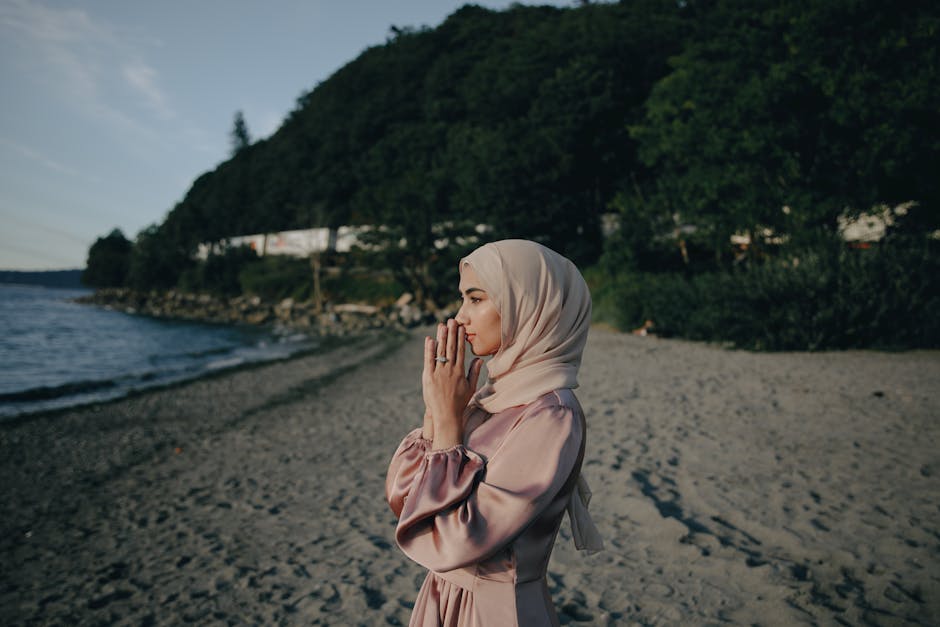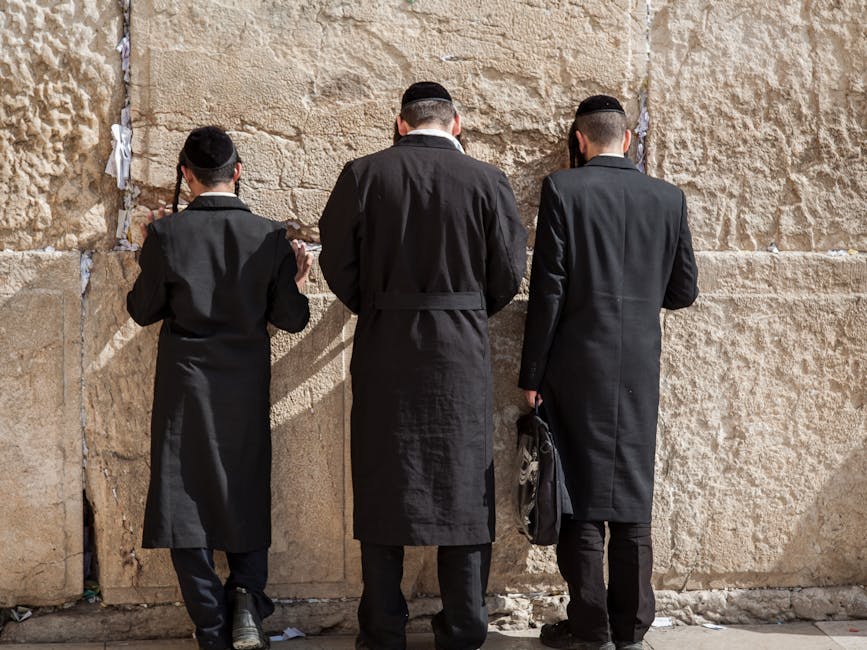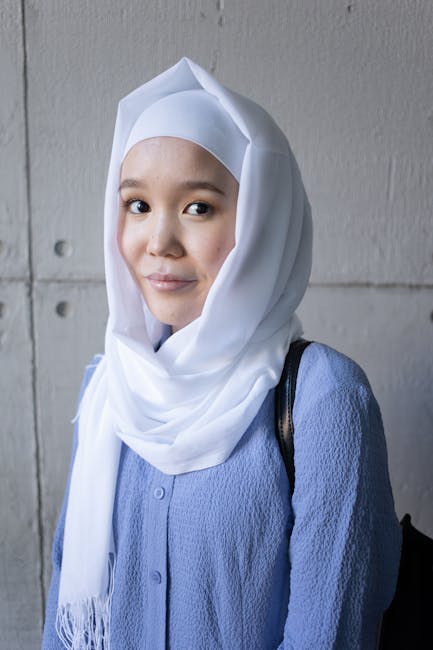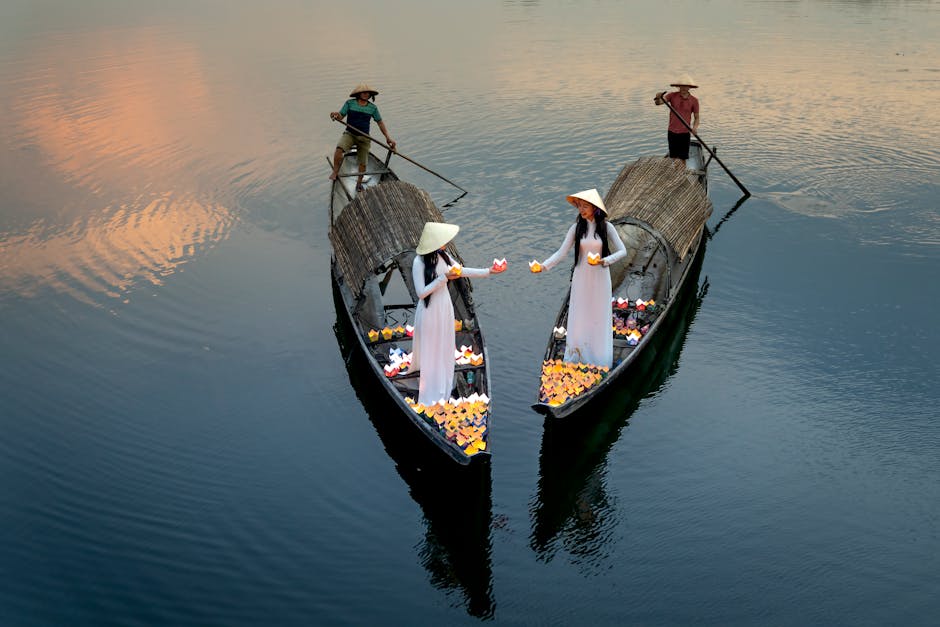Welcome to the ultimate fashion Face-Off: Cultural Dress Codes Edition! In one corner, we have the vibrant and opulent world of Middle Eastern fashion, with its flowing fabrics and intricate patterns. And in the other corner, we have the sleek and sophisticated styles of Western fashion, with its tailored silhouettes and trendy accessories. Get ready to witness the clash of the titans as we compare and contrast these two distinct fashion realms. Grab your popcorn, because this showdown is about to get fierce!
Key Differences in Middle Eastern and Western Fashion Styles
Middle Eastern fashion styles may involve more intricate patterns and embellishments compared to Western fashion. From luxurious fabrics like silk and satin to bold accessories like statement jewelry and ornate headscarves, Middle Eastern fashionistas aren’t afraid to make a statement with their outfits. On the other hand, Western fashion tends to be more minimalistic and focused on clean lines and neutral colors. Think sleek silhouettes, classic denim, and timeless pieces that can easily transition from day to night.
When it comes to traditional dress, Middle Eastern fashion often showcases cultural heritage and religious beliefs through garments like the abaya, kaftan, and hijab. These items are not only stylish but also serve as a form of modesty and respect for the wearer’s culture. In contrast, Western fashion typically embraces individuality and self-expression, with trends that come and go with each season. Whether it’s bohemian chic, athleisure, or preppy styles, Western fashion allows for more experimentation and creativity.
Footwear is another key difference between Middle Eastern and Western fashion. In the Middle East, shoes are often designed for both fashion and function, with intricate details and embellishments that elevate any outfit. From traditional babouches to modern sandals and heels, Middle Eastern footwear exudes elegance and sophistication. In Western fashion, shoes are more versatile and practical, with a focus on comfort and versatility. Sneakers, ankle boots, and ballet flats are staples in a Western wardrobe, perfect for running errands or hitting the town. So, whether you prefer the opulence of Middle Eastern fashion or the laid-back vibes of Western style, there’s no denying that both have their own unique charm and appeal. Fashion is all about personal expression, so feel free to mix and match elements from both worlds to create a look that is uniquely you!
Traditional Middle Eastern Garments and Their Significance
Are you tired of the same old boring Western fashion trends? Why not spice up your wardrobe with some traditional Middle Eastern garments? From flowing robes to intricate headscarves, these garments are not only stylish but also carry a deep cultural significance.
One of the most iconic Middle Eastern garments is the keffiyeh. This square scarf, typically worn around the head or neck, has been a symbol of resistance and solidarity for decades. Whether you’re protesting against oppression or just trying to keep the desert sun off your face, the keffiyeh is a versatile accessory that adds a touch of rebellious flair to any outfit.
Another must-have item in any Middle Eastern fashionista’s closet is the thobe. This ankle-length robe is not only incredibly comfortable but also exudes an air of elegance and tradition. Whether you’re attending a formal event or just lounging around the house, the thobe is the perfect garment for any occasion.
And let’s not forget about the abaya. This flowing robe, typically worn by women, is not only a symbol of modesty but also a fashion statement in its own right. With intricate embroidery and luxurious fabrics, the abaya is a must-have for anyone looking to add a touch of glamour to their wardrobe.

Evolution of Western Fashion Trends Over Time
From corsets and hoop skirts to skinny jeans and crop tops, Western fashion trends have definitely come a long way over the years. Let’s take a stroll down memory lane through the evolution of style:
- 1800s: The Victorian era was all about modesty and elegance. Women’s fashion was characterized by layers of petticoats, boned corsets that cinched the waist to impossible proportions, and voluminous hoop skirts that made it nearly impossible to sit down.
- 1920s: The roaring twenties brought a wave of liberation and rebellion. Flappers ditched the corsets and embraced loose, shapeless dresses that allowed them to dance and move freely. Short bobbed haircuts and bold makeup became all the rage.
- 1980s: Cue the neon colors, shoulder pads, and leg warmers. The 80s were all about excess and bold statements. Madonna’s layered bracelets, lace gloves, and statement jewelry were iconic, and everyone rocked a perm or teased hairdo.
And here we are in the present day, where anything goes in the world of fashion. From athleisure to normcore, there’s a little something for everyone. Who knows what the future holds in store for Western fashion trends? One thing’s for sure – it’s bound to be a wild ride!

The Influence of Religion and Culture on Dress Codes in the Middle East
Religion and culture have a strong influence on dress codes in the Middle East, shaping the way people dress and express themselves. From the flowing abayas worn by women to the traditional keffiyehs worn by men, fashion in the Middle East is a vibrant reflection of centuries-old traditions and beliefs.
One of the most iconic symbols of Middle Eastern fashion is the hijab, a headscarf worn by Muslim women as a symbol of modesty and faith. This versatile piece of clothing comes in a variety of styles and colors, allowing women to express their individuality while still adhering to religious guidelines. Some women even take it a step further by adding stylish pins and brooches to their hijabs, turning them into fashion statements.
Men in the Middle East also adhere to strict dress codes, often opting for traditional thobes and dishdashas that are not only comfortable but also exude an air of sophistication. Pairing these garments with a classic kufiya and sandals, Middle Eastern men effortlessly blend tradition with modernity, showcasing a timeless sense of style that is truly unique.
With cultural influences ranging from the Ottoman Empire to the Persian Empire, the Middle East boasts a rich tapestry of fashion that continues to evolve and captivate audiences around the world. Whether it’s the intricate embroidery of a Palestinian dress or the intricate patterns of a Moroccan kaftan, Middle Eastern fashion is a vibrant celebration of history, religion, and culture.

Globalization and the Impact on Cultural Dress Codes
In today’s world of globalization, cultural dress codes are like that one crazy aunt at family gatherings – always causing a stir and leaving everyone questioning what just happened. As different cultures and traditions merge and mix, the lines between what is considered appropriate attire become blurrier than your vision after a wild night out.
Picture this: you’re strolling down the streets of Tokyo, passing by traditionally dressed geishas and salarymen in their sharp suits. Suddenly, you spot a tourist rocking a Hawaiian shirt and flip-flops like they just stepped off a beach in Waikiki. **Talk about a fashion faux pas!** But hey, who am I to judge? Maybe they’re just trying to start a new trend – tropical chic, anyone?
And let’s not forget about the impact of social media on cultural dress codes. One minute you’re scrolling through Instagram and admiring a beautiful sari from India, the next minute you’re tempted to click “add to cart” on a knockoff version from a fast fashion retailer. **#CultureAppropriationOrAppreciation?** You be the judge.
But hey, if there’s one thing we can all agree on, it’s that cultural dress codes are like a box of chocolates – you never know what you’re gonna get. So next time you’re getting ready to step out in your finest attire, just remember to embrace the diversity and celebrate the uniqueness of each culture. After all, fashion is meant to be fun, right
Fashion Taboos: What is Considered Appropriate in Middle Eastern vs. Western Society
In Middle Eastern society, modesty is paramount when it comes to fashion choices. It is considered inappropriate to show too much skin, so low-cut tops and short skirts are a no-go. Instead, women opt for traditional abayas and headscarves to cover up. Accessories are kept minimal, with delicate jewelry being the norm.
On the other hand, Western society tends to be more relaxed when it comes to fashion taboos. Showing off some cleavage or a bit of leg is not considered scandalous. In fact, boldness and individuality are often celebrated. Trends, such as crop tops, mini skirts, and statement jewelry, are embraced with open arms.
When it comes to colors, Middle Eastern fashion tends to lean towards more muted tones and neutral colors. Bright and flashy colors are reserved for special occasions. In Western society, however, the bolder, the better. Neon colors, bold prints, and patterns are all fair game. Mixing and matching different colors and textures is encouraged.
Ultimately, while there may be some differences in what is considered appropriate in Middle Eastern vs. Western society, fashion is all about personal expression. Whether you prefer to stick to traditional attire or push the boundaries with bold and daring choices, the most important thing is to wear what makes you feel confident and comfortable.
FAQs
Why do Middle Eastern dress codes tend to be more conservative compared to Western fashion?
Oh, you know, just a little thing called tradition! While Western fashion loves to push boundaries and show off those gams, Middle Eastern cultures prefer to keep things a bit more modest. It’s all about respecting cultural norms and values, baby.
Can Western fashionistas take inspiration from Middle Eastern dress codes?
Absolutely! Who wouldn’t want to add a touch of elegance and sophistication to their wardrobe? Take a page from the Middle Eastern style playbook and rock some flowy fabrics, intricate patterns, and dazzling accessories. You’ll be turning heads in no time!
Do Middle Eastern and Western fashion trends ever intersect?
Oh, you betcha! Fashion knows no bounds, baby. You’ll often see Middle Eastern influences popping up on Western catwalks, and vice versa. It’s like a beautiful cultural dance of style and flair.
Are there any misconceptions about Middle Eastern dress codes?
Oh, honey, where do I even begin? So many people think that all Middle Eastern fashion is drab and boring, but let me tell you, they’ve got some serious style game. Rich colors, luxurious fabrics, and intricate detailing – what’s not to love?
How can we promote cultural understanding through fashion?
It’s simple, darlings. Just open your mind, embrace diversity, and show some love for different cultures. Rock that kimono, flaunt those kaftans, and strut your stuff in a sari. Fashion is a universal language, so let’s use it to spread some love and acceptance. Peace, love, and fabulous fashion for all!
—
That’s a Wrap!
And there you have it, folks! We’ve taken a closer look at the fascinating world of cultural dress codes, comparing the bold and intricate styles of the Middle East to the chic and trendy fashion of the West. Whether you’re rocking a kaftan or a little black dress, remember that fashion is about expressing your unique identity and embracing diversity. So go ahead, mix and match, and have fun with your wardrobe choices! And who knows, maybe one day we’ll see a fusion of Middle Eastern and Western fashion that will take the world by storm. Until then, stay stylish and keep breaking those fashion barriers!






